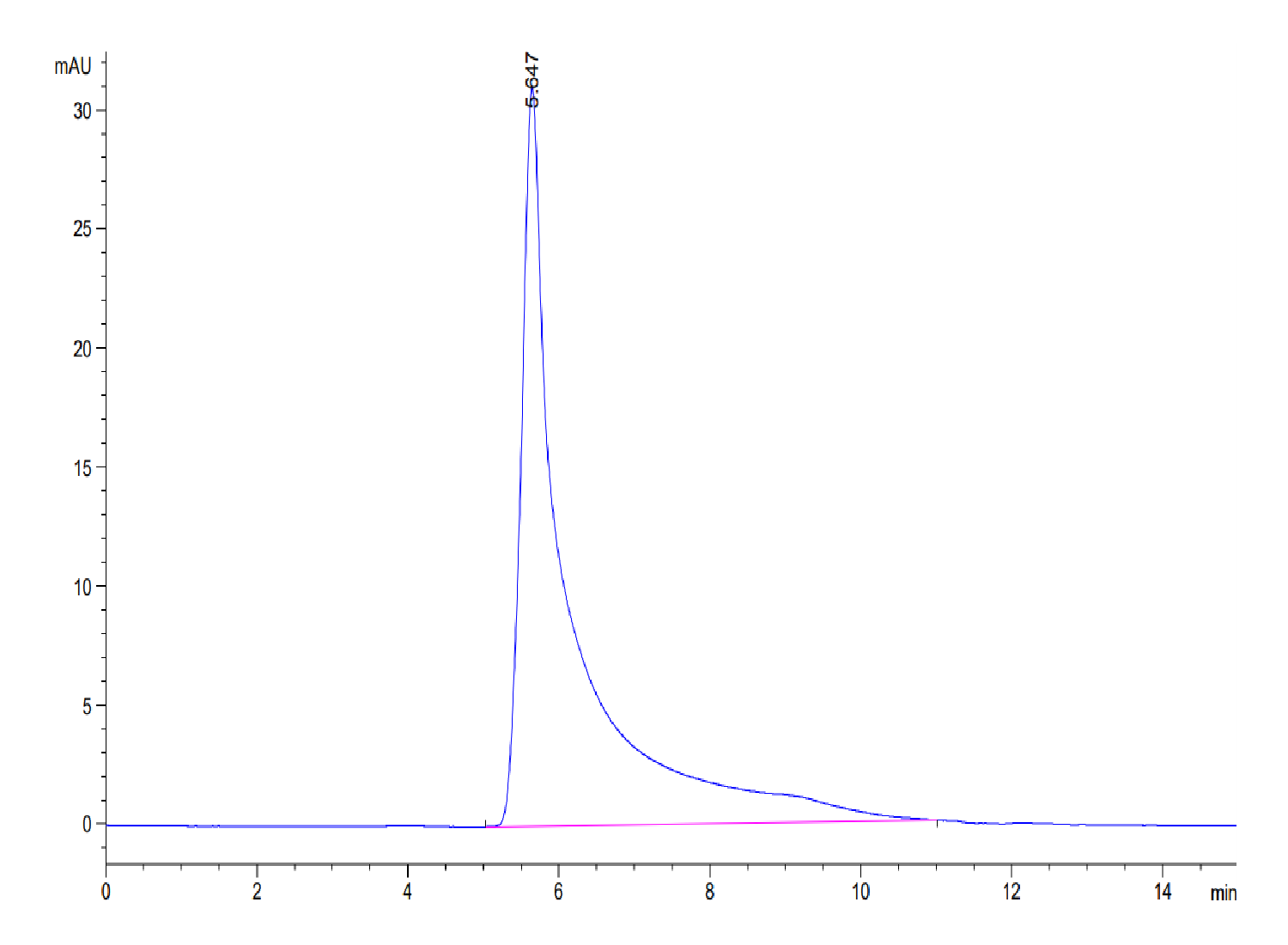|
| Mouse CCL5 Protein (LTP10456) |
|
| LTP10456 |
|
| 100ug |
|
|
$450 In stock |
| The CCR5 and the CCL5 ligand have been detected in some hematological malignancies, lymphomas, and a great number of solid tumors, but extensive studies on the role of the CCL5/CCR axis were performed only in a limited number of cancers. |
| Recombinant Mouse CCL5 Protein is expressed from Expi293 with hFc tag at the N-terminal. It contains Ser24-Ser91. |
|
| CCL5 |
|
| Mouse |
|
| P30882 |
|
| Ser24-Ser91 |
|
| The protein has a predicted MW of 35.2 kDa. Due to glycosylation, the protein migrates to 40-45 kDa based on the Tris-Bis PAGE result. |
|
| 0 |
|
| N-hFc |
|
| Expi293 |
|
| > 95% as determined by Tris-Bis PAGE; > 95% as determined by HPLC |
|
| Less than 1EU per ug by the LAL method. |
|
| Lyophilized from 0.22 um filtered solution in PBS (pH 7.4). Normally 8% trehalose is added as a protectant before lyophilization. |
|
| Reconstituted protein stable at -80 C for 12 months, 4 C for 1 week. Use a manual defrost freezer and avoid repeated freeze-thaw cycles. |
|
| Shipped at ambient temperature. |
|
| Centrifuge tubes before opening. Reconstituting to a concentration of more than 100 ug/ml is recommended. Dissolve the lyophilized protein in distilled water. |
|
|  |